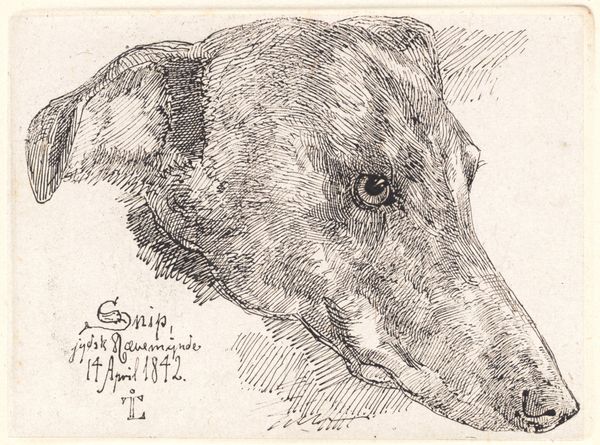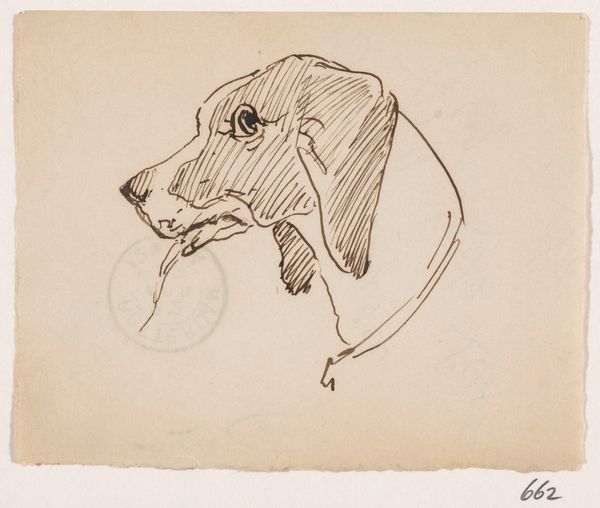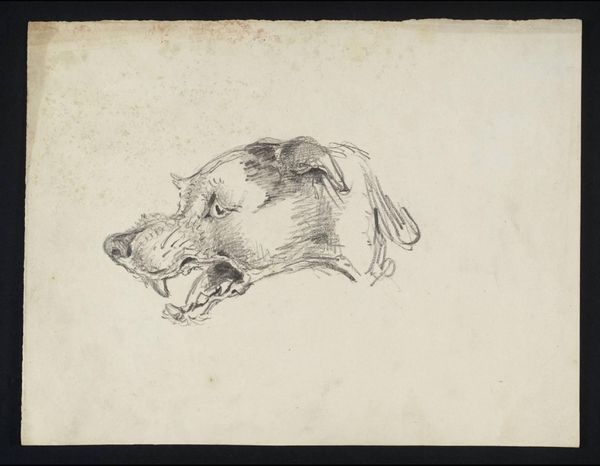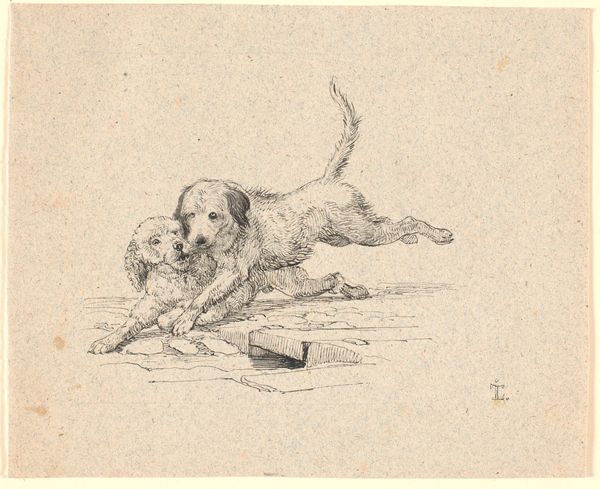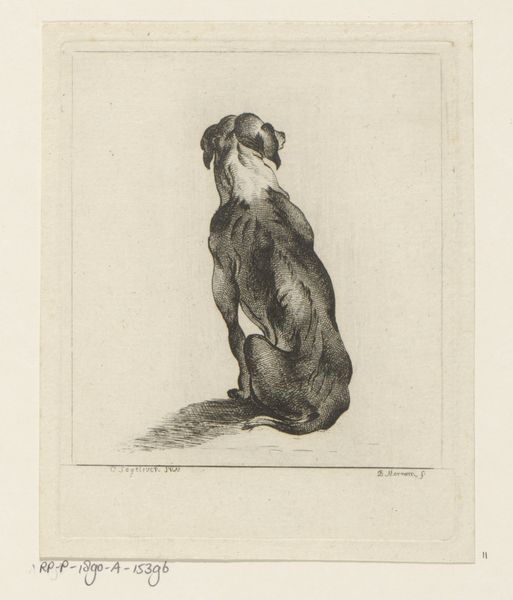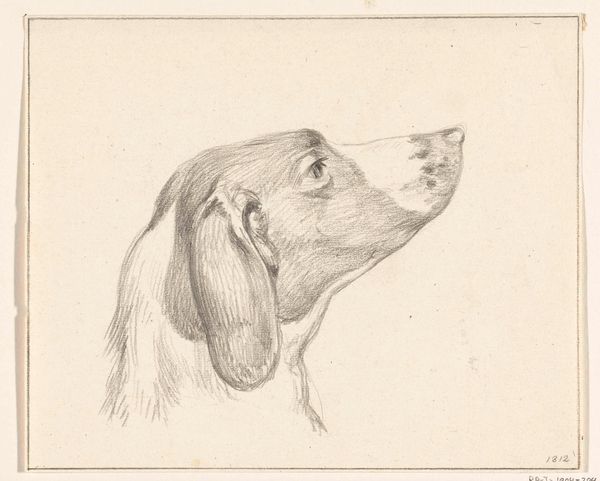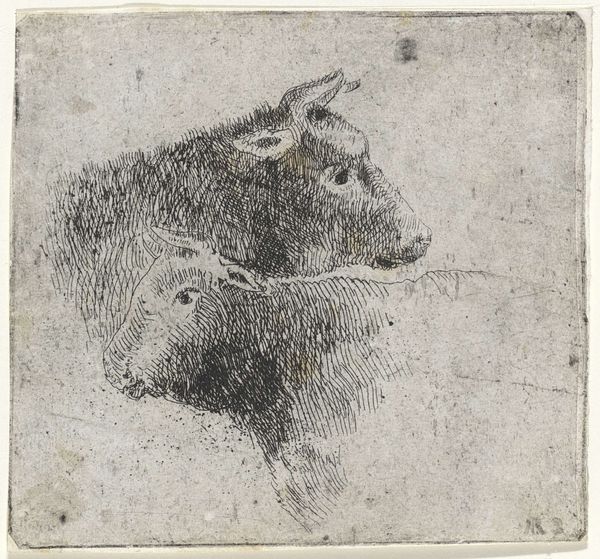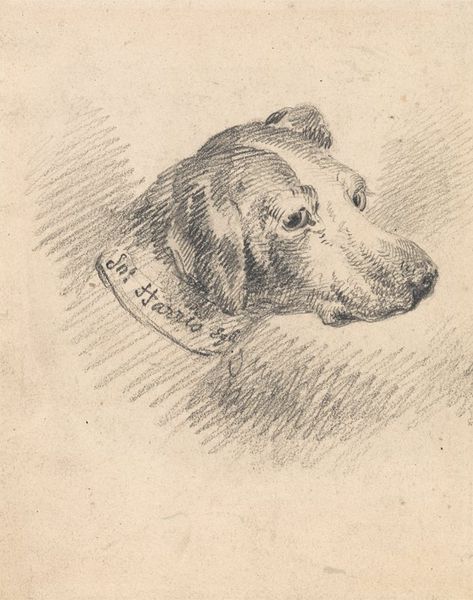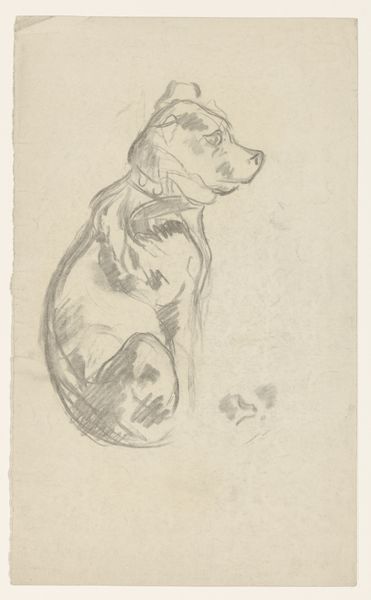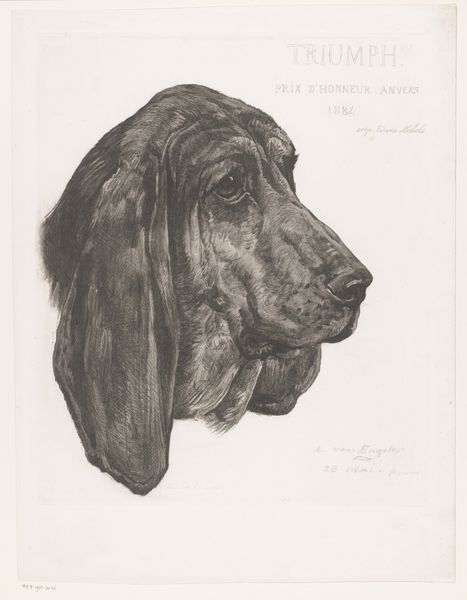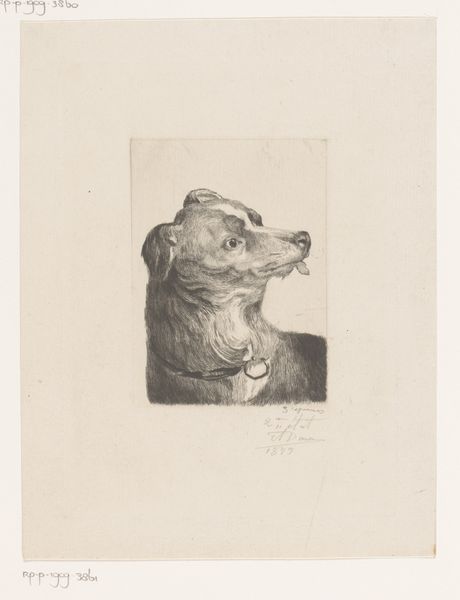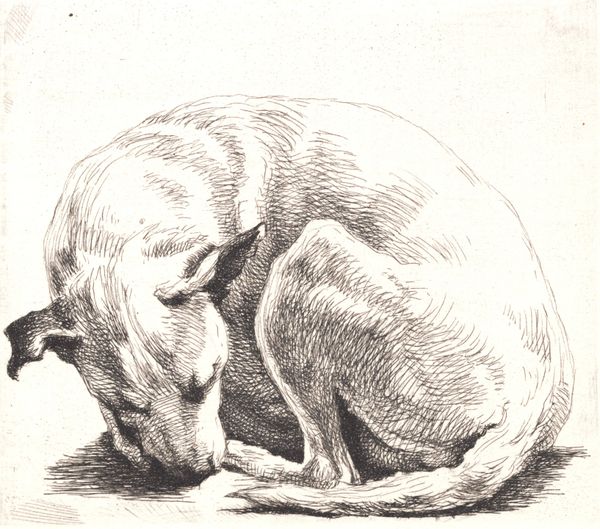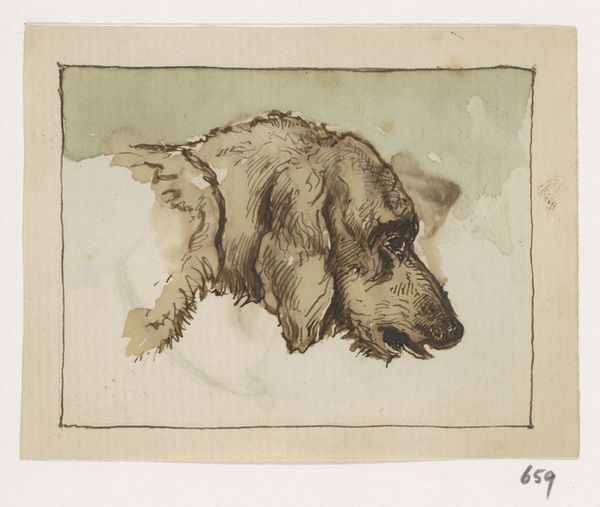
drawing, print, pencil
#
portrait
#
pencil drawn
#
drawing
# print
#
pencil sketch
#
pencil drawing
#
romanticism
#
pencil
#
realism
Dimensions: 73 mm (height) x 101 mm (width) (plademaal)
Curator: This is "Hundehoved, Snip" by Johan Thomas Lundbye, created in 1842. It's a pencil drawing, a delicate portrait of a dog's head. Editor: The first thing that strikes me is its melancholic air. Despite being a relatively simple sketch, the detail around the eye conveys such a depth of emotion. Curator: Indeed. Lundbye masterfully uses line and shading to create a tangible sense of volume. The subtle hatching emphasizes the dog's bone structure, its noble features, the slope of its brow. He clearly understood canine anatomy. Editor: The dog itself could be seen as symbolic of loyalty, of course, but also of a certain kind of domestic subjugation. The fact that it is a close crop forces you to consider power dynamics in relationship to nineteenth century society. The dog isn't freely running. It's placed for observation and inspection. Curator: But observe the sensitivity in the lines that describe its fur; the meticulous record of light on its coat. I would argue it surpasses mere documentation and edges into artistic interpretation, especially within the formal conventions of Romanticism. Editor: Perhaps. Yet can we separate artistic intent from the historical moment? Romanticism, for all its aesthetic achievements, often ignored or even justified existing social hierarchies. We cannot forget that even in depicting the innocence of an animal, Lundbye operated within those frameworks. Curator: Do you think that takes away from the technical skill demonstrated in the pencilwork itself? The sheer control needed to render the textures so faithfully? Editor: Not necessarily diminish, but recontextualize. To examine it solely as an exercise in skill without accounting for the embedded socio-political narrative seems incomplete. Curator: I find the pure formalism mesmerizing – the way line creates form. Editor: And I am constantly driven back to the inescapable impact of ideology and historical power structures, reflected and refracted in every object around us. Curator: It’s an engaging interplay – between aesthetics and ideologies. Editor: Yes, a dance we're bound to have to revisit over and over.
Comments
No comments
Be the first to comment and join the conversation on the ultimate creative platform.
